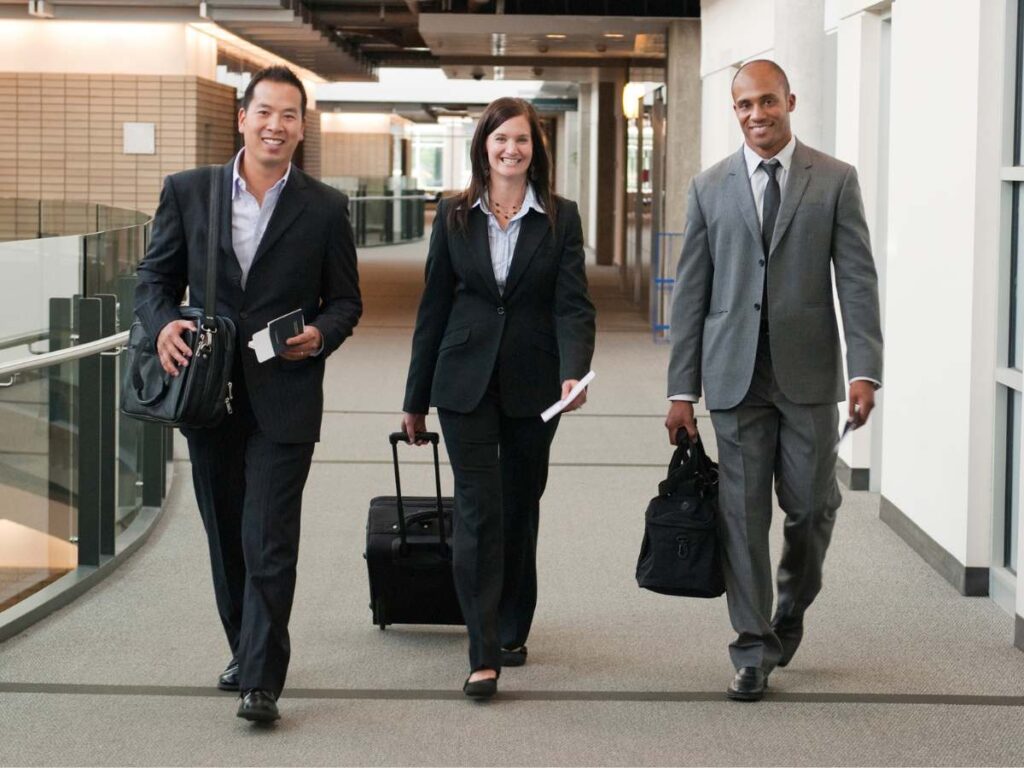Hotel Rack Rate: Definition and Strategies to Maximize Event and Group Bookings

One of the key strategies that hotels can leverage, especially when hosting events and group bookings, is the use of rack rates. While traditionally associated with individual guest bookings, the rack rate – the published rate for a room before any discounts – plays an important role in managing group and event-based reservations. Here’s how hotels can use rack rates to boost their revenue when catering to these larger bookings.
What is a Hotel Rack Rate?
A rack rate is the official maximum published price for a hotel room before any discounts or special offers are applied. Also sometimes called a walk-in rate or retail rate, it is essentially the standard or “sticker price” of a hotel room, though guests rarely pay this full amount due to various available discounts and promotional rates. For individual travelers, it’s rare to pay the full rack rate due to the availability of corporate discounts, loyalty programs, or seasonal promotions. However, for events and group bookings, the rack rate can be a valuable starting point for revenue management, especially in negotiations.
Understanding Guest Room Pricing in a Hotel
- Rack Rate
- Highest published rate
- Base price before any discounts
- Rarely actually charged
- Corporate Rate
- Discounted rates for business travelers
- Requires company credentials
- Usually 10-30% off rack rate
- Group Rate
- For bulk bookings (weddings, conferences)
- Requires minimum room block
- Often includes perks/amenities
- Seasonal Rate
- Fluctuates based on peak/shoulder seasons
- Higher during popular travel times
- Lowest during off-peak periods
- Package Rate
- Bundled with extras (meals, activities)
- Often provides overall savings
- May require minimum stay
- Member Rate
- For loyalty program members
- Usually includes additional benefits
- Typically requires direct booking
- Government/Military Rate
- Special rates for government employees
- Requires valid ID
- Often fixed rates year-round
- AAA/AARP Rate
- Discount for members
- Usually 5-15% off standard rates
- Must show membership card

Factors Affecting How Much to Charge for Your Hotel Rooms
Pricing for rooms at your hotels is tricky! There are so many things that can impact your decision in setting pricing. Hotels must constantly monitor and adjust to maximize revenue while maintaining competitive rates. Here’s more details around the factors affecting hotel room rates:
- Seasonality
- Peak seasons command premium rates due to high tourist demand
- Major holidays typically see rate increases
- Off-season rates drop to attract guests
- Local events (festivals, conferences) can create micro-peak periods
- Weather patterns influence regional pricing strategies
- Day of Week Variations
- Weekend rates often higher for leisure destinations
- Business hotels charge more midweek
- Sunday through Tuesday typically lower in urban areas
- Special event dates override normal patterns
- Extended stay rates may differ from daily rates
- Location Factors
- Prime city center locations command premium prices
- Proximity to airports, convention centers affects rates
- Ocean/mountain views justify higher pricing
- Access to public transportation influences rates
- Neighborhood safety and amenities impact pricing
- Demand Dynamics
- Current hotel occupancy levels drive daily rate adjustments
- Competitor occupancy rates influence pricing
- Citywide conventions affect entire market rates
- Sports events and concerts create demand spikes
- Last-minute availability can lead to rate fluctuations
- Room Characteristics
- Suite vs. standard room pricing
- Corner rooms often priced higher
- High floor premiums for better views
- Recently renovated rooms command higher rates
- Special room features (balcony, kitchenette) affect pricing
- Booking Timing
- Early booking discounts to secure occupancy
- Last-minute rates vary based on availability
- Longer stays may qualify for better rates
- Flexible vs. non-refundable booking rates
- Advanced purchase requirements for best rates
- Market Conditions
- Local competition’s pricing strategies
- Economic conditions (recession, growth)
- Currency exchange rates for international markets
- Industry trends and disruptions
- Regional business climate
- Distribution Channel Impact
- Direct booking rates vs. Online Travel Agency (OTA) rates
- Corporate negotiated rates
- Travel agent commission structures
- Wholesale rates for tour operators
- Package deal pricing through partners
- Operating Costs
- Staff wages and benefits
- Energy and utility costs
- Maintenance and upkeep expenses
- Property taxes and insurance
- Brand standards requirements
- Guest Type Considerations
- Business vs. leisure pricing strategies
- Group rates for large bookings
- Loyalty program member discounts
- Government and military rates
- Senior and AAA member discounts

Why Understanding Rack Rates Matters
Understanding rack rates is essential for hotels as it serves as a critical strategic tool in negotiations and revenue management. The rack rate establishes a clear ceiling price, providing hotels with a strong starting position in negotiations with various client segments, from corporate accounts to event planners. This published maximum rate creates flexibility in offering targeted discounts while maintaining perceived value – when clients receive a 20% discount off the rack rate, they can clearly see the value proposition. In corporate and group negotiations, knowing and strategically setting rack rates allows hotels to structure tiered pricing programs and volume-based discounts that appear attractive to clients while protecting profit margins. The rack rate also serves as a benchmark for seasonal adjustments, special promotions, and package deals, enabling hotels to demonstrate added value in their offerings. Additionally, having well-established rack rates helps hotels maintain pricing integrity across different distribution channels and provides a consistent base for revenue management strategies. When used effectively in negotiations, rack rates can help hotels avoid price-driven competition and instead focus discussions on value, amenities, and service quality, ultimately leading to more profitable agreements with clients.
Strategies to Grow Groups Through Rack Rates
1. Leverage Rack Rates for Group Discounts
One of the most effective ways to maximize revenue when dealing with groups is to position the rack rate as the baseline for offering discounts. By starting with the rack rate, hotels can create the perception of value when offering a discounted group rate. This allows sales teams to structure group contracts in a way that still preserves profitability.
For instance, if the rack rate for a room is $200 per night, offering a 10% discount for a group booking of 20 rooms may feel like a significant saving to the organizer. Yet, the hotel is still generating substantial revenue compared to heavily discounted online promotions. By positioning discounts relative to the rack rate, hotels ensure they remain in control of their pricing while appearing competitive to group planners.
2. Adjust Rack Rates Based on Event Timing and Demand
Hotels can optimize their revenue by adjusting rack rates based on demand. For peak event seasons, conferences, or weddings, the rack rate should reflect the heightened demand for rooms. When events are scheduled during these high-demand periods, offering group rates based on an elevated rack rate can significantly boost revenue.
For example, during a high-traffic event season, hotels can increase the rack rate to account for scarcity of rooms. Negotiated group rates are then based on this higher starting point, allowing the hotel to secure premium pricing even when offering a discount. Conversely, during shoulder seasons when demand is lower, offering more aggressive discounts from the rack rate can help fill rooms and improve occupancy rates.
3. Bundle with Event Packages
For hotels that specialize in hosting events, bundling event services with rooms at the rack rate is a smart way to increase perceived value. Offering special packages that include event space, catering, and accommodations at the rack rate for group bookings creates an all-inclusive feel that simplifies decision-making for event planners.
For example, a hotel could create a wedding package that includes a set number of rooms at the rack rate, along with banquet hall space and catering. By bundling services together at a premium, the hotel can enhance its revenue per booking while providing added convenience to the client. Even though the rack rate may not be discounted, the additional value of the bundled services makes the overall package appealing.
4. Set Minimums for Group Bookings
When establishing minimum spends for event or group bookings, hotels can use the rack rate as a guideline. For example, if a hotel requires a minimum booking of 10 rooms for an event, using the rack rate as the standard can help ensure that minimum revenue targets are met. Group organizers will often expect discounts, but by basing the minimum on the full rack rate, hotels can maintain control over profitability.
Additionally, if a hotel is using a platform like Tripleseat to manage events and track minimum spend requirements, integrating rack rates as part of this strategy ensures that the financial goals of the venue are aligned with the client’s expectations.
5. Promote as a Benchmark for Premium Offerings
Lastly, hotels can use the rack rate as a way to position their property as a premium venue for events. By emphasizing the full value of rooms and services, hotels can attract clients looking for high-end experiences. For instance, luxury hotels hosting large corporate events or destination weddings can use the rack rate to demonstrate the premium quality of their accommodations, thereby justifying the pricing for group and event services.
This strategy works well when targeting clients who are more interested in quality and exclusivity rather than discounts, and it can be a strong selling point for upscale venues.
Rack Rates are More Than Just a Pricing Tool for Individual Bookings
If you take away anything from this article, know that Rack Rates can be a powerful way to maximize revenue from group and event-based business. By using rack rates as a benchmark for discounts, adjusting them based on demand, bundling them with event services, setting minimums, and promoting premium offerings, hotels can strike a balance between profitability and guest satisfaction. As the events and group bookings segment continues to grow, especially with corporate and social events on the rise, strategic use of rack rates will be essential for optimizing revenue and staying competitive in the market.
Tripleseat for Hotels: Make More Group Sales and Revenue
Increase and manage your hotel’s group sales from hotel room blocks, to booking event function spaces, and growing banquet revenues, in one tool with Tripleseat for Hotels. Schedule a demo to learn more.
